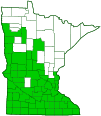bracted spiderwort
(Tradescantia bracteata)
Conservation • Wetland • Description • Habitat • Ecology • Use • Distribution • Taxonomy
Description |
||
Bracted spiderwort is a 8″ to 16″ tall, erect, perennial forb that rises on 1 to many stems from thick, fleshy, fibrous roots. The stems are erect or ascending, usually unbranched, bright green, and usually hairless or with fine, short hairs near the top. There are 2 to 4 nodes on the stem and up to 8″ between nodes. The stems and leaves are not glaucous. The leaves are alternate, linear, 3″ to 12″ long, and ⅓″ to ⅔″ wide. They are bright green, stiff, folded lengthwise forming a groove (keeled), and hairless or sometimes hairy with minute, fine hairs. The upper leaves are as narrow or narrower than the part of the leaf that surrounds the stem when it is opened and flattened. The base of the leaf sheaths the stem. The tip tapers to a point with concave sides along the tip. The margins are untoothed. The inflorescence is a tight, umbrella-like cluster of 5 to 15 flowers arising from the same point. They appear at the end of the stem and sometimes also on long stalks rising from the leaf axils. A pair of bracts below the inflorescence are similar to the leaves but often longer and wider, 2″ to 12″ long. The bracts are folded lengthwise and curve downward. The flowers are 1″ to 1½″ wide. They are on ⅔″ to 1⅓″ long, densely hairy stalks which droop when in bud, becoming erect when the flower opens. The sepals are densely covered with long hairs. The 3 petals are usually bright rose, sometimes blue, and egg-shaped. There are 6 stamens with bright yellow anthers. The petals last only one day, opening in the morning then turning to jelly in the mid-day heat. The central flowers bloom first. There is no floral scent. The hairiness on the sepals and flower stalks are a mix of long and short, glandular and non-glandular hairs. The fruit is a papery, nearly round capsule ¼″ or less in diameter with 2 to 6 seeds. |
||
Height |
||
8″ to 16″ |
||
Flower Color |
||
Bright rose or blue |
||
Similar Species |
||
Ohio spiderwort (Tradescantia ohiensis) is a much taller plant, 16″ to 24″ tall at maturity. The stems are often branched, bluish-green, and glaucous. The leaves are grayish-green or bluish-green, glaucous, and flat, not keeled. The bracts are 1″ to 8″ long and no wider than the leaves. The sepals and flower stalks are usually hairless. Prairie spiderwort (Tradescantia occidentalis var. occidentalis) is a slightly taller plant, 8″ to 24″ tall at maturity. The stems are glaucous and often branched. The leaves are glaucous and are rolled inward toward the upper side, not keeled. The bracts are 2″ to 8″ long and no wider than the leaves. The sepals and flower stalks are sparsely hairy with minute, glandular hairs. |
||
Habitat |
||
Moist to dry. Prairies, roadsides. Full sun. |
||
Ecology |
||
Flowering |
||
April to July |
||
Pests and Diseases |
||
|
||
Use |
||
|
||
Distribution |
||||
|
Sources |
|||
| 3/1/2023 | ||||
Nativity |
||||
Native |
||||
Occurrence |
||||
|
||||
Taxonomy |
|||
| Kingdom | Plantae (Plants) | ||
| Division | Tracheophyta (Vascular Plants) | ||
| Subdivision | Spermatophytina (Seed Plants) | ||
| Class | Liliopsida (Monocots) | ||
| Subclass | Commelinidae | ||
Order |
Commelinales (spiderworts and allies) | ||
Family |
Commelinaceae (spiderworts) | ||
| Subfamily | Commelinoideae | ||
| Tribe | Tradescantieae | ||
| Subtribe | Tradescantiinae | ||
Genus |
Tradescantia (spiderworts) | ||
Subgenus |
Tradescantia | ||
Synonyms |
|||
|
|||
Common Names |
|||
bluejacket blue-jacket bracted spiderwort common spiderwort longbract spiderwort long-bracted spiderwort small spiderwort smooth spiderwort spider lily sticky spiderwort |
|||
Glossary
Axil
The upper angle where the leaf stalk meets the stem.
Bract
Modified leaf at the base of a flower stalk, flower cluster, or inflorescence.
Glandular hairs
Hairs spread over aerial vegetation that secrete essential oils. The oils act to protect against herbivores and pathogens or, when on a flower part, attract pollinators. The hairs have a sticky or oily feel.
Glaucous
Pale green or bluish gray due to a whitish, powdery or waxy film, as on a plum or a grape.
Keeled
Folded, as in a grass blade, or with a raised ridge, as in a grass sheath; like the keel of a boat.
Linear
Long, straight, and narrow, with more or less parallel sides, like a blade of grass.
Node
The small swelling of the stem from which one or more leaves, branches, or buds originate.
Sepal
An outer floral leaf, usually green but sometimes colored, at the base of a flower.
Sheath
The lower part of the leaf that surrounds the stem.
Visitor Photos |
|||||
Share your photo of this plant. |
|||||
| This button not working for you? Simply email us at info@MinnesotaSeasons.com. Attach one or more photos and, if you like, a caption. |
|||||
Kirk Nelson |
|||||
Lebanon Hills Regional Park, next to the trail along the northeast side of McDonough Lake |
|||||
 |
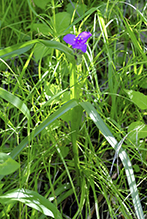 |
||||
MinnesotaSeasons.com Photos |
|||||
Plant |
|||||
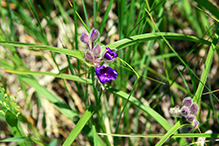 |
 |
||||
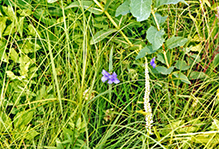 |
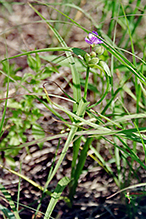 |
||||
Inflorescence |
|||||
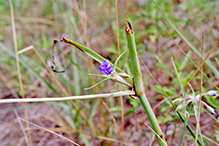 |
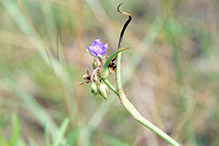 |
||||
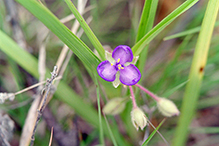 |
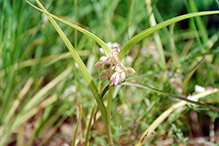 |
||||
Flower |
|||||
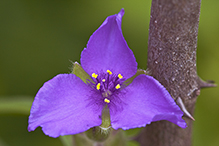 |
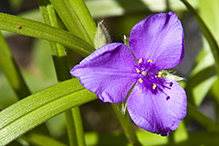 |
||||
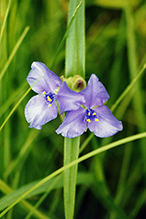 |
 |
||||

Slideshows |
||

Visitor Videos |
|||
Share your video of this plant. |
|||
| This button not working for you? Simply email us at info@MinnesotaSeasons.com. Attach a video, a YouTube link, or a cloud storage link. |
|||
Other Videos |
|||

Visitor Sightings |
|||||
Report a sighting of this plant. |
|||||
| This button not working for you? Simply email us at info@MinnesotaSeasons.com. Be sure to include a location. |
|||||
| Kirk Nelson 5/27/2017 |
Location: Lebanon Hills Regional Park Next to the trail along the northeast side of McDonough Lake |
 |
|||
MinnesotaSeasons.com Sightings |
|||||

Created 6/25/2005
Last Updated:
